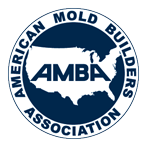By: Brent Borgerson
February 5, 2010
Drying is an important part of the process for any product made of hygroscopic (meaning affinity for moisture) thermoplastic. For medical implants made of bioabsorbable polymers, dryness is particularly critical. Inadequate drying can produce a variety of problematic results. These include: lack of tensile properties and impact resistance, as well as varying flow characteristics.
Bioresins, much like other hygroscopic thermoplastic resins, can suffer three types (or a combination of these three types) of degradation: thermal, mechanical or hydrolytic. In most thermoplastics these types of degradation occur chiefly during the molding process. With bioresins such as the PLA, PLG , and PGA families, hydrolytic degradation also occurs before and after the molding process.
An implantable device must decay or degrade in the body as part of the absorption process. Different materials and part designs have different rates of degradation in the body (where it is in a moist environment). The rate of degradation and retention of mechanical properties is affected in no small degree by the way the resin was dried and how the dried resin and finished part were handled.
If a bioresin grocery bag degrades quicker than it was designed to, the results can be the bottom falling out and groceries on the ground. If an implantable device degrades quicker (or slower) than designed to, the results can be harmful to the patient. The degradation process of the implant is key to resorption in the body.
Run of the mill dryers are generally not sufficient to control the moisture as well or reach the super-low moisture levels desired for absorbable implants. Many implant molders opt for vacuum dryers or compressed air with membrane dryers. Since most implants are small, vacuum ovens designed for lab use is another option for resin drying. In any case, the drying schedule and temperatures provided by the resin manufacturer must be strictly followed.
In many cases, the resins must be dried to less than 0.02% (200 ppm) and the resin and finished product must be maintained dry. This requirement mandates an inert gas such as nitrogen atmosphere in any non-vacuum dryer hopper, humidity controlled atmosphere in the cleanroom, vacuum packing with a desiccant and nitrogen, and refrigerated storage of the resin prior to drying.
It is not enough to strictly follow the drying and handling procedure, the resin dryness must be well tested, documented, and controlled. The dryness data is so important because it must be correlated with part degradation data to be able to predict implant device performance and absorption in the body. Lost weight or halogen type moisture analyzers are relatively economical devices but should be equipped with data acquisition and logging technology.
Drying bioabsorbable resins requires specialized knowledge, methods, and equipment, but is key to successful bioresin implant molding.
_horizontal_white_536x129.png)

